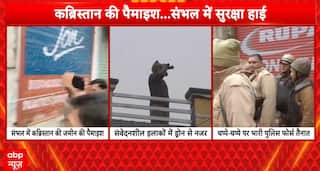James Webb Telescope Hit By Multiple Micrometeoroids, And The Damage 'Cannot Be Corrected'
Scientists have said in the report that the micrometeoroid impact on C3 caused “significant uncorrectable change” in the overall figure of the mirror segment.

NASA's James Webb Space Telescope (JWST) was hit by a micrometeoroid in late May 2022. In the JWST commissioning report, scientists have stated each micrometeoroid caused degradation in the wavefront of the impacted mirror segment. A wavefront is a surface containing points affected in the same way by a wave at a given time.
The damage has resulted in problems that "cannot be corrected", scientists noted in the report.
FULL COVERAGE OF JAMES WEBB SPACE TELESCOPE ON ABP LIVE
Six Localised Surface Deformations On Webb’s Primary Mirror
As many as six localised surface deformations on the primary mirror were recorded during commissioning of the telescope. These deformations have been attributed to impact by micrometeoroids. The micrometeoroid impacts occurred at a rate of roughly one per month. According to the report, there should be a small effect on the telescope throughput (the amount of information flowing through a system over a specific period), which is not yet measurable. As many as five micrometeoroid strikes had negligible effects.
However, the micrometeoroid which hit segment C3 between May 23 and May 25 caused "significant uncorrectable change" in the overall figure of that segment, the report said. The scientists also noted that the effect was small at the full telescope level because only a small portion of the telescope area was affected.
Webb’s Mirrors And Sunshield Are Expected To Slowly Degrade
According to the report, it is not clear what will determine the duration of the JWST's mission. The mirrors and sunshield are expected to slowly degrade from micrometeoroid impacts, and the detectors are expected to experience cumulative slow damage from charged particles, the report said.
Space weathering is expected to degrade the sunshield and multilayer insulation. The report further said that the spacecraft was designed for a five year mission, and the science instruments include many moving parts at cryogenic temperatures.
Scientists had taken into account the sources of degradation in the design of the JWST, and had set performance margins so that the telescope would still perform after many years of operation.
"At present, the largest source of uncertainty is long term effects of micrometeorite impacts that slowly degrade the primary mirror," the report said.
Why JWST’s Primary Mirror Has Gold Segments
The 6.5-metre primary mirror of the JWST comprises 18 beryllium-gold segments. A little more than 48 grams of gold have been used in the mirrors of the orbiting infrared laboratory.
Webb's mirrors are covered in a microscopically thin layer of gold to optimise the mirrors for reflecting infrared light, according to NASA. Gold reflects up to 99 per cent of all the infrared light it encounters. Also, gold is one of the most unreactive metals, and is extremely durable to oxidise and decay in space.
The precious element, which was forged in the death of stars, and is now part of the Webb Space Telescope, is being used to investigate the dawn of the universe. C3 is one of the beryllium-gold segments, and was struck by a micrometeoroid between May 23 and May 25, 2022.
Micrometeoroid Impact On C3 Segment Caused “Significant Uncorrectable Change”
After C3 was hit by a micrometeoroid in May, Thomas Zurbuchen, Associate Administrator, NASA, tweeted that micrometeoroid strokes are an unavoidable aspect of operating in space. He wrote that Webb sustained an impact to one primary mirror segment, and that after initial assessments, the team found the telescope is still performing at a level that exceeds all mission requirements.
However, scientists have said in the report that the micrometeoroid impact on C3 caused “significant uncorrectable change” in the overall figure of the segment.
The report further stated the micrometeorite impact "exceeded prelaunch expectations of damage for a single micrometeoroid, triggering further investigation and modeling by the JWST Project."
The JWST has enough propellant to last 20 years, a decade longer than previously expected. However, engineers who designed Webb know that its mirrors and sunshield will unavoidably slowly degrade from micrometeoroid impacts, according to a Forbes report.
"Inevitably, any spacecraft will encounter micrometeoroids," the JWST commissioning report said.
Scientists wrote in the report that it is not yet clear whether the May 2022 hit to segment C3 was a rare event or whether the telescope may be more susceptible to damage by micrometeoroids than pre-launch modelling predicted. A rare event is an unlucky early strike by a high kinetic energy micrometeoroid that statistically might occur only once in several years.
According to the report, the JWST Project team is conducting additional investigations into the micrometeoroid population, how impacts affect beryllium mirrors, and how the telescope mitigates further strikes.
The report suggested minimising time spent looking in the direction of orbital motion, which statistically has higher micrometeoroid rates and energies.
The JWST is an international collaboration between NASA, European Space Agency (ESA) and the Canadian Space Agency (CSA). After decades of wait, Webb was launched into space on December 25, 2021, atop an Ariane 5 rocket from the Guiana Space Centre located near Kourou, French Guiana.
Webb will examine every phase of cosmic history, from the first luminous glows after the Big Bang to the formation of galaxies, stars, and planets, and the evolution of our own solar system.
Related Video
Southern Rising Summit 2024: How Important is Self-Awareness? Insights from Anu Aacharya | ABP LIVE






































